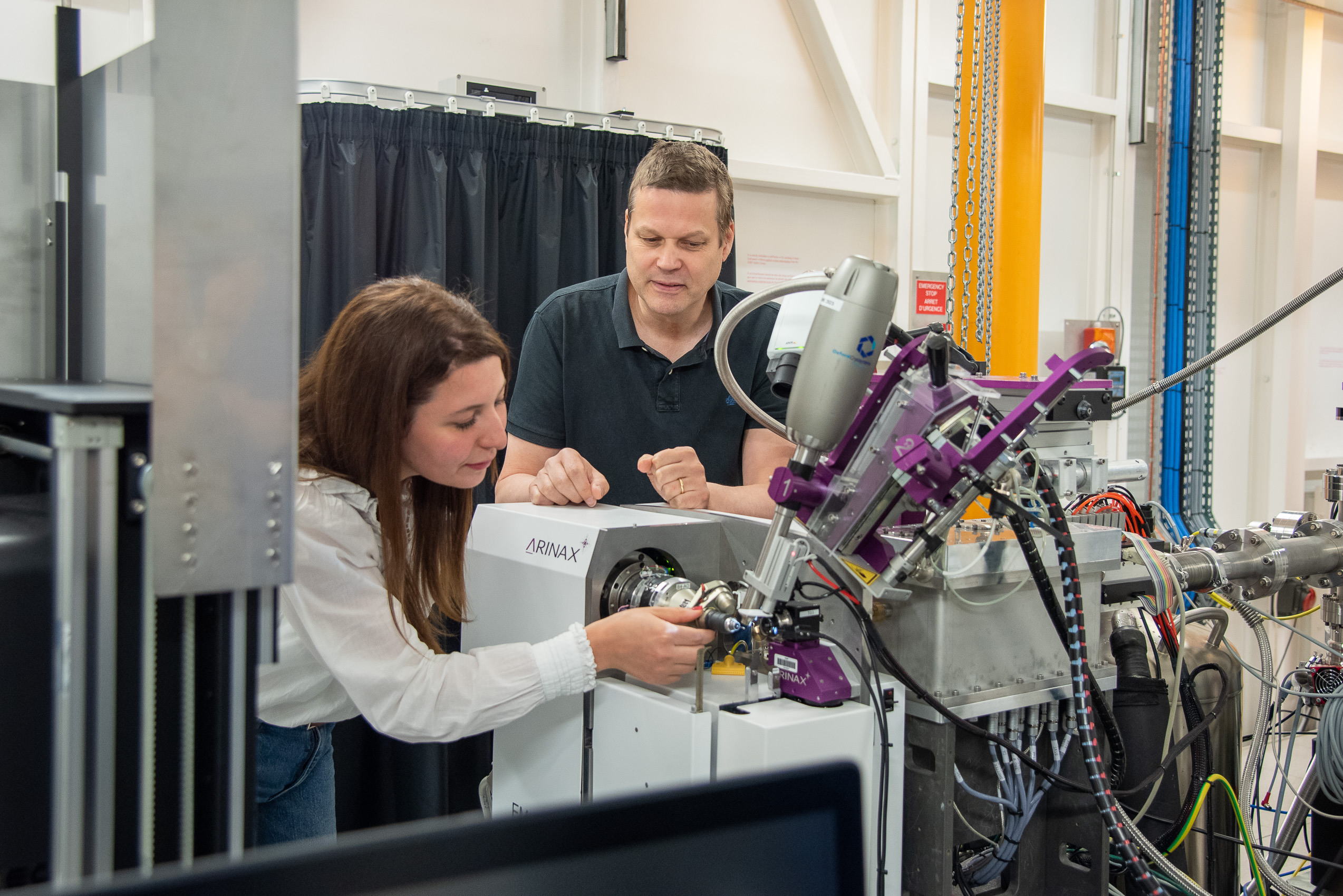- Home
- News
- General News
- New hope in the...
New hope in the fight against malaria
13-06-2023
Scientists have identified and characterized a new inhibitor that prevents the malaria parasite to infect human red blood cells. It is non-toxic to human cells and targets a nanomotor of the parasite. Structural studies conducted at the ESRF beamlines, in collaboration with teams from the Curie Institute and Vermont University, elucidate the novel mode of inhibition that paves the way for new preventative medications against this disease. The results are published today in Nature Communications.
Malaria infection in humans, caused by the Plasmodium parasites and transmitted via the bite of an infected Anopheles mosquito, is a prominent global health issue. In 2020, malaria caused 627,000 deaths, the majority being children under the age of five according to the WHO. In 2021, nearly half of the world’s population was at risk of malaria. The European Centre for Disease Prevention and Control states that with global climate change, there is a risk that malaria appears in Europe in the coming decades.
In recent years, there has been a remarkable progress in antimalarial therapeutics. However, the parasite is developing resistance to all existing treatments, including current first-line treatments containing artemisinin-based therapies. The first ever malaria vaccine is on the market since October 2021, however its efficacy is relatively modest.
Therefore, the international community is still on the lookout for novel treatments. Six years ago, an international collaboration of scientists, including the Institut Curie in France (Julien Robert-Paganin & Anne Houdusse), the University of Vermont in the USA (Kathleen Trybus) and Imperial College in the United Kingdom (Jake Baum) investigated a large molecular complex called the glideosome that plays a crucial role in the movement of the Plasmodium falciparum (Pf) parasite.
The scientists found that the motor within this glideosome complex, Pf myosin A (PfMyoA), is a key-protein essential for the parasite (Robert-Paganin et al., 2019; Moussaoui et al., 2020). Without it, the parasite cannot move in its host and cannot infect human cells. Myosins are a large class of molecular motors that produce force and movement using ATP, the energy currency in the living organisms. Interestingly, PfMyoA is specific to malaria parasites and sufficiently different from human myosins so that it can be used as a target for drug development.
Following up on their findings, the team focused on a promising inhibitor, called KNX-002, which binds specifically to PfMyoA. They studied it on living malaria parasites and the results are very promising: in the presence of KNX-002, the parasites cannot invade human red blood cells. The inhibitor was subsequently crystallized in complex with PfMyoA. The structure could be solved using the structural biology beamline ID30B at the ESRF. The atomic structure demonstrates how KNX-002 docks close to the ATP binding pocket of Pf myosin A, thus blocking its ability to produce force.
 |
|
Dihia Moussaoui and Christoph Müller-Dieckmann on beamline ID30B. Credits: C. Argoud. |
"It is very exciting to be part of this new approach to a possible malaria drug candidate. A big challenge of this research was the crystallization part", says Dihia Moussaoui, co-first author of the paper and post-doctoral researcher at the ESRF. "I had to successfully crystallize the protein, which is inherently flexible all the time, with the inhibitor, which took more than six months", she explains.
“The experimental setup of ID30B was essential to optimize data collection from these challenging crystals”, explains Christoph Müller-Dieckmann, scientist in charge of ID30B and co-author of the publication. “The success of this research is due in part to the high brilliance, small size and stability of the beam we have now with EBS, and it opens new vistas to further research on this field at the ESRF”, he adds.
In parallel to the work done at the ESRF, the collaborators also used the techniques of transient kinetics and parasitology to gain insights into the inhibitor.
The discovery of the new inhibitor KNX-002 paves the way for the development of a new generation of antimalarial prevention treatments. It is worth noting that no current treatment tackle PfMyoA. “These results demonstrate that PfMyoA is a realistic antimalarial target and we will now focus on improving the action of the inhibitor”, concludes Dihia Moussaoui.
Reference:
Text by Montserrat Capellas Espuny
Top image: The structure of PfMyoA complexed with KNX-002 at high-resolution, paving the way to the design of new antimalarial compounds. Credits: Dihia Moussaui.



